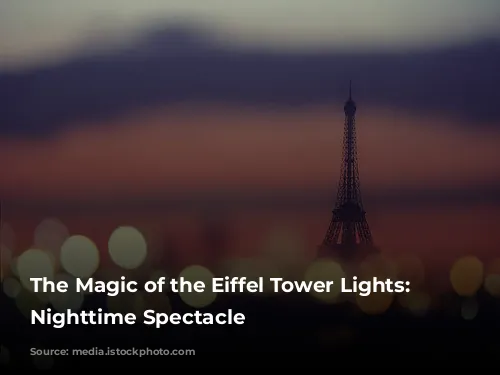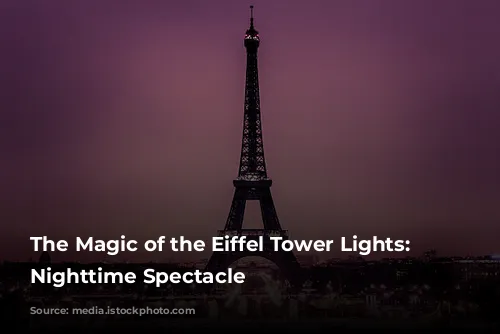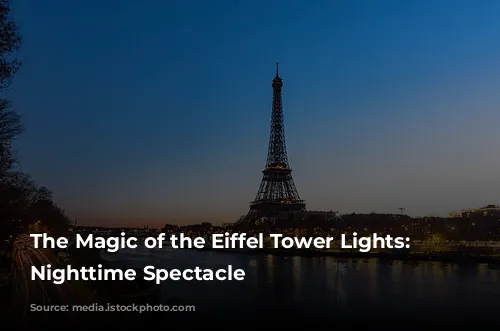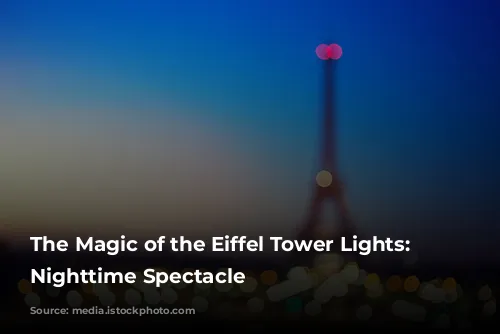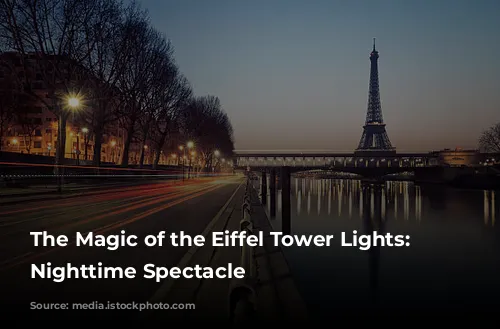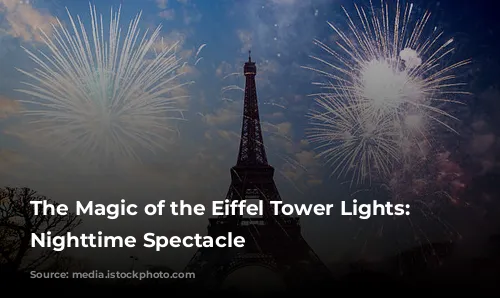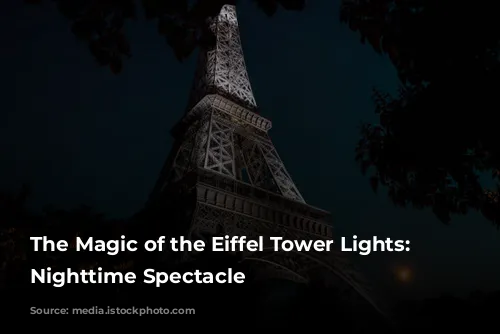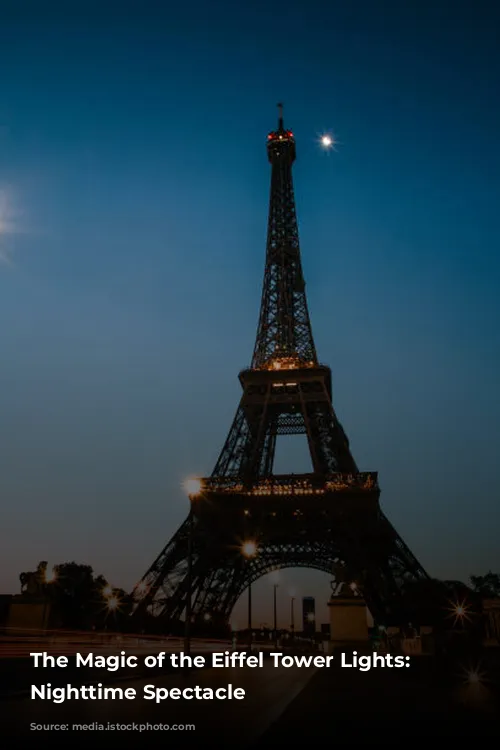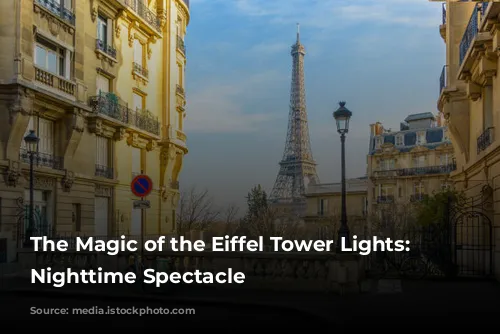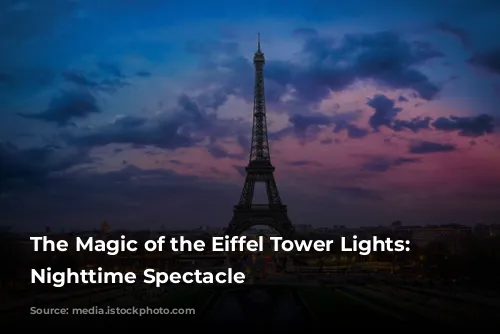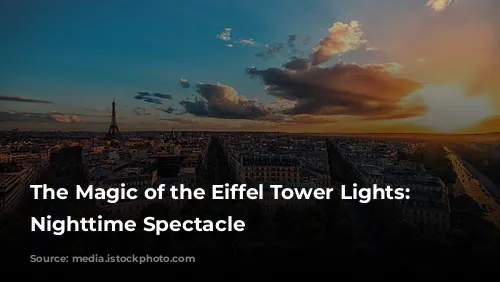The Eiffel Tower, a symbol of Paris, becomes even more captivating after dark. Its shimmering lights transform the Iron Lady into a dazzling spectacle, illuminating the City of Lights. Let’s explore the history of the Eiffel Tower’s illuminations and uncover the secrets behind this breathtaking display.

Unraveling the Lights: All You Need to Know
Does the Eiffel Tower light up every night? Absolutely! The Iron Lady shines brightly from sunset until 1 AM every day. During the summer months, the lights stay on an hour later, until 2 AM.
When does the Eiffel Tower sparkle? Every hour, for five minutes, the Eiffel Tower embarks on a captivating light show, twinkling and illuminating the night sky. This captivating display occurs every evening.
Where are the best spots to enjoy the Eiffel Tower light show? The possibilities are endless! Head to the Trocadero, take a romantic cruise on the Seine River, or ascend the Montparnasse Tower for a breathtaking perspective. Every vantage point offers a unique and unforgettable view of the illuminated Eiffel Tower.
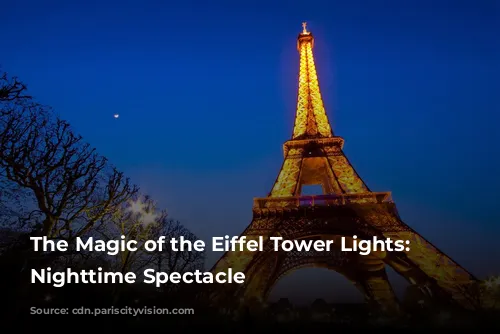
A Glimpse into History: The Evolution of Eiffel Tower Illuminations
The Eiffel Tower has undergone a captivating evolution of light displays throughout its history. Each era brought new techniques and enhancements, transforming the Iron Lady into a dynamic beacon of light.
The Early Years: A Pioneer of Illumination
The idea to illuminate the Tower emerged as early as 1889, during its debut at the Universal Exhibition. Gaslights encased in opalescent glass globes were used to create the first nighttime display. A lighthouse, intermittently changing its intensity, projected the colors of the French flag, adding a touch of national pride. At the 1900 Universal Exhibition, the lighting system underwent a significant upgrade, incorporating 5,000 electric bulbs that adorned the Tower’s facades.
The Jazz Age: A Symphony of Lights and Colors
The 1920s and 1930s witnessed the Eiffel Tower becoming a canvas for captivating light shows. The Citroen Group seized the opportunity to illuminate the Tower during celebrations, featuring 250,000 multicolored lamps that displayed the Citroen brand name, visible from a distance of 40 kilometers.
In 1933, a mesmerizing 15-meter wide clock tower with colorful minute and second hands was installed, adding a touch of whimsy to the nighttime display. However, this spectacle was short-lived, discontinued in 1936 due to its high maintenance costs.
For the 1937 Arts and Techniques Exhibition, André Granet transformed the Tower into a dazzling spectacle. He adorned the structure with a massive chandelier, 10 kilometers of multicolored fluorescent tubes, and 30 spotlights that illuminated the sky. The Tower’s facades glowed white, while its edges shimmered in vibrant gold, red, and blue.
The Modern Era: New Illuminations for a Changing World
The Eiffel Tower continues to captivate audiences with innovative light displays that reflect the spirit of the times.
Christmas 1978 saw the Tower transformed into a magnificent, luminous Christmas tree, spreading holiday cheer across Paris.
New Year’s Eve 2000 was a monumental occasion. A neon countdown, installed in 1997, counted down the days until the turn of the millennium (D-1000). At midnight, the Eiffel Tower burst into life, showcasing a mesmerizing fireworks waltz that celebrated the new era.
The Eiffel Tower’s dazzling lights have also been used to celebrate cultural events. In 2004, it was illuminated in red for the Chinese New Year. In 2006, it was bathed in blue for the Europe Festival.
In 2007, the Tower paid homage to the Rugby World Cup, transforming itself into a giant stadium with green lights, a rugby goalpost, a 13-meter wide ball, and a 120-meter wide flat screen for watching the matches.
Beyond celebrations, the Eiffel Tower has become a symbol of environmental and social awareness. In 2007, the lights were turned off for “A Five-Minute Break for the Planet,” emphasizing the importance of sustainability. In 2014, the Tower glowed pink to show support for the fight against breast cancer.
Witness the Magic: Visit the Eiffel Tower!
To experience the magic of the Eiffel Tower’s lights firsthand, a visit is a must! Immerse yourself in the history and beauty of this iconic landmark, and be captivated by its stunning nighttime illuminations. For information about ticket and tour prices, visit Paris City Vision.
